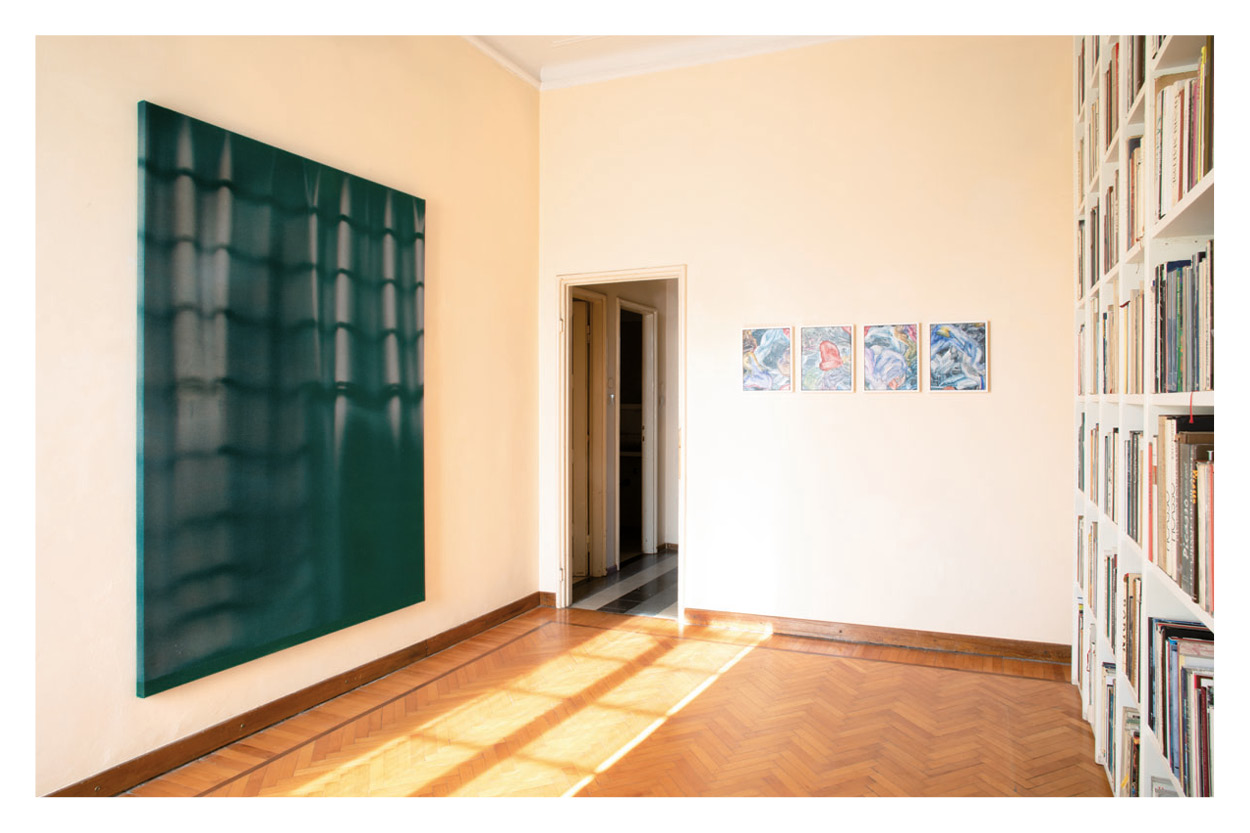Barbara Prenka, born in Kosovo
Rhapsody is an itinerary embracing twenty-four canvases. Twenty-four stages conceived as referring to a movement towards destinations that unceasingly shift and alter. In each of the works, colours, shapes and brush strokes flow and reappear, are conserved and transformed, return unexpectedly. A journey that is broken, interrupted, begun again. In the artist’s intentions, the work arises from a sense of the rhapsody as a complex that unifies, in which each single piece is a narration, but also the sequel to another tale. A continual evolution of migratory movements, a continual evolution that does not stagnate in rooted stability, but maintains the echo of an impossibility to settle, remaining in suspended tension.
Hsing-Chun Shih, born in Saudi Arabia
Hsing-Chun Shih’s installation includes three elements that revolve around an audio track, a recording of the sounds of a textile factory in Taipei, Taiwan, where the artist grew up. It is impossible not to think, then, of the noises arriving, in workdays, from Testori Group, a factory alongside Casa Testori, and which are superimposed upon those from another distant factory. At the core of the project is a fabric, dismantled so as to show, in its central part, the profile of a landscape, white on white, the evanescence of which depends on how it is manipulated, in a precarious equilibrium implemented through a precise creative destruction, to which a photo bears witness. These same threads, having been detached, are then resewn and used to recreate a map. Embroidery on the curtain defines another silhouette, glimpsed only against the light: it is the profile of Taiwan in one of the first maps made of the island.
Alek O., born in Argentina
In the work of Alek O., the original function, and sometimes the texture, is lost, but the memory remains under other semblances. They are reassembled, with an apparent rigour that reveals an imprecise geometry, dictated by the material itself and therefore by the story of these objects. Thye change shape, but do not lose their memory, they conserve it even in their titles, which sometimes refer to their first situation, they transform the object into its previous owner. This is the case both with Flatland, a composition of doormats found here and there, and with Paolo, a curtain that belongs to another space, marked by the sun, impressed on it like a long exposure photo. Frozen on a canvas, it no longer separates interior from exterior, it no longer protects from other eyes, it shows this life to new observers.





